It’s all about buns, bread, baking, and bowls this weekend.
Bowing to pressure to have one but not wanting anything expensive, our wedding list included a Pyrex jug, tea towels, a metal watering can, and ‘the largest possible Mason Cash mixing bowl’. Who needs matching china and carriage clocks, when you can have a huge, sturdy, pale brown earthenware bowl which will see you through years and years of creaming butter and sugar, soaking dried fruits in brandy, and whisking egg whites?
I may have been influenced by watching Mrs Bridges - above - in Upstairs, Downstairs who was very à la mode, using the bowls from 1903 ie soon after they were first launched in 1901, but it was more likely to be my grandmother who made wonderful pastry in hers.
[MC bowl in the pantry in The Tiled Kitchen (1954), Harry Bush]
That particular bowl saw us through many years of marriage, various house moves and six years in Germany and Belgium, but eventually it had to be replaced - with another large Mason Cash bowl, in the classic biscuity shade which I like so much (although, shockingly, less traditional colours are now available). The Pyrex jug has lost its markings, we have been through a LOT of tea towels since our wedding day, and there is now a range of battered tin watering cans at the allotment. And still I love these household staples - they simply cannot be bettered.
{Brocket Buns in Brockley]
This weekend I’m making hot buns without crosses (not cross buns?), an annual treat. Every single year we say we should have them more often, and every year we reach Good Friday again and realise it’s been a whole 365/6 days since we ate so many, still warm and slathered in butter, that we could barely move for hours. For someone who rarely knows what day or date it is, I seem to have a homing pigeon’s sense of direction towards hot buns.
So out comes the big bowl for mixing and proving, the Pyrex jug for measuring warm water and starting off the yeast,
[A Woman in a Kitchen (1935), Frederick Harrison]
and back come the memories of my children sitting on the work surface or standing on a chair to help stir, teaching them how to rub fat into flour and weigh sultanas and raisins, letting them lick the bowl (I selflessly take it upon myself to do this now).
[The Kitchen at Charleston (c1943), Vanessa Bell]
We also have an electric mixer so it’s not all elbow grease and aching wrists when baking, but the bowl is essential for proving sourdough, marinading meat, and hulling strawberries for jam,
[The Kitchen Garden in October on the cover of Ambrose Heath’s The Country Life Cookery Book (1937) by Eric Ravilious]
so I like the way these images capture the central role of the mixing bowl in the kitchen, its timeless simplicity and functionality.
[Kitchen Still Life (1948), William Scott]
Of course, other bowls are available, as they would say on the BBC. I like the yellow glazed bowls from Manufacture de Digoin (originally for butchers but just as good for bakers), blue and white striped Cornishware, and Joanna Oliver’s bowls in beautiful shapes and colours. But for size, sturdiness, longevity, and a sense of Mrs Bridges’ domestic power, there’s nothing better than a Mason Cash bowl.
[allotment bunch]
Happy Easter Sunday!
PS I don’t know what’s happened to commercial hot cross buns recently, but something has gone horribly wrong with the weird flavour mixes. The best recipe, the one I’ve used for years (adding nutmeg but omitting cinnamon and mixed spice which are anathema to me), is in Baking with Passion by Dan Lepard.




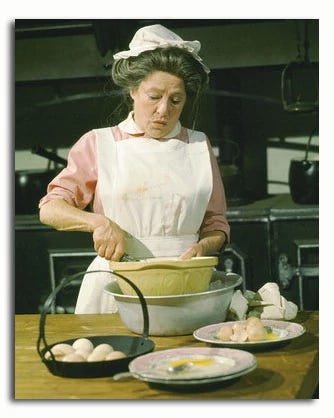

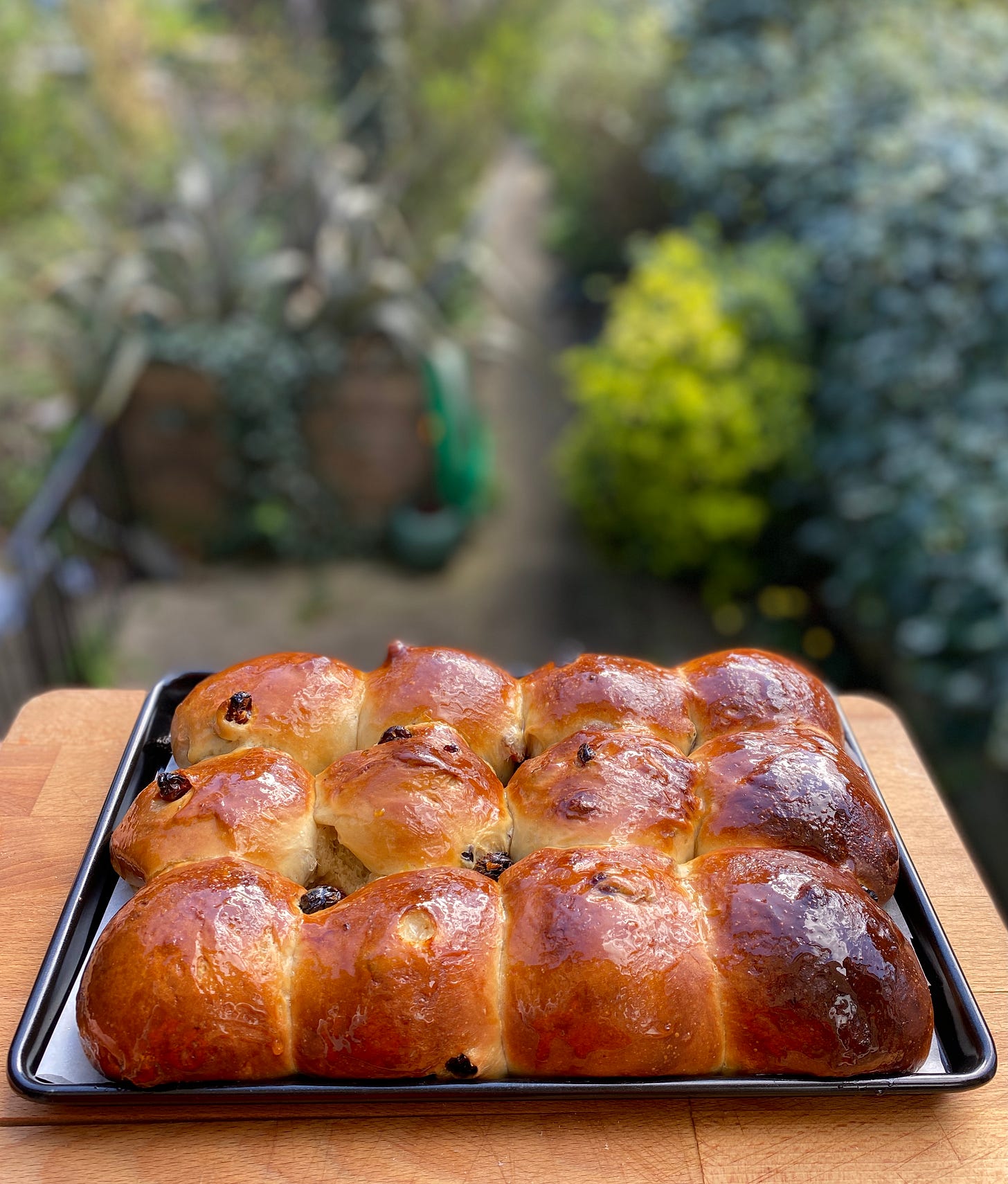
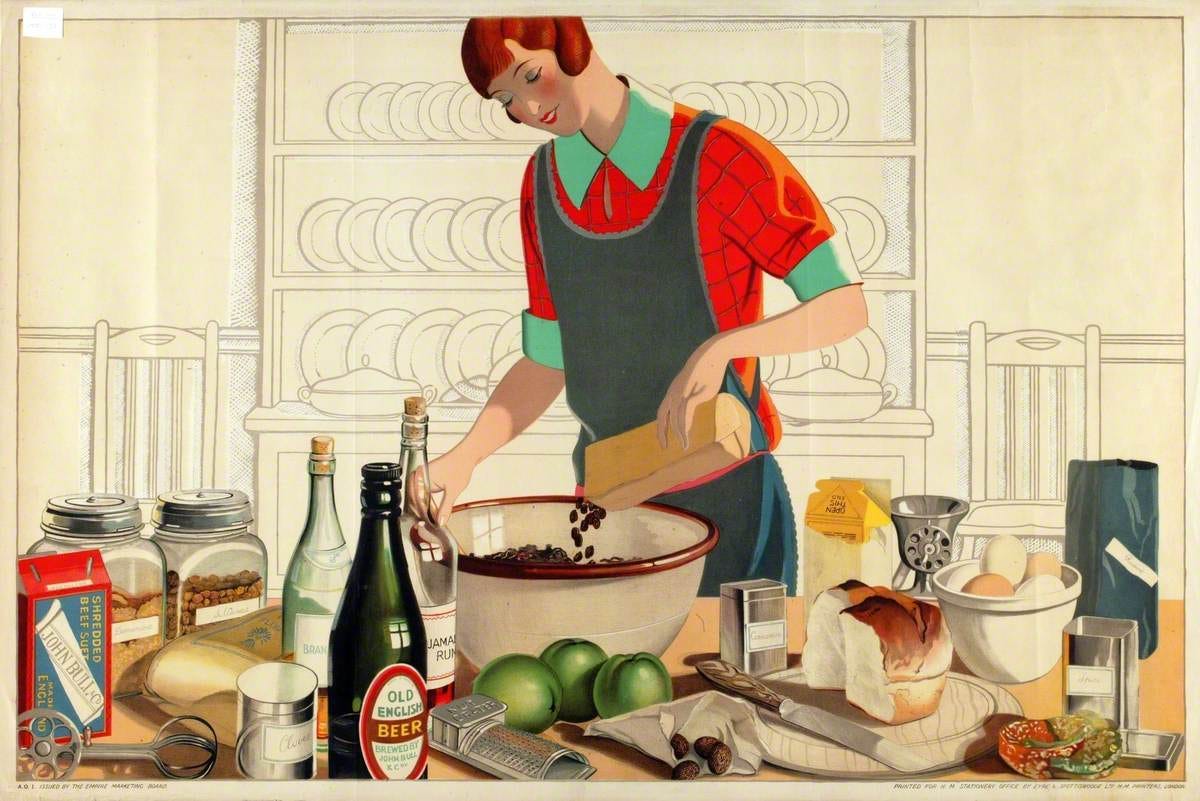


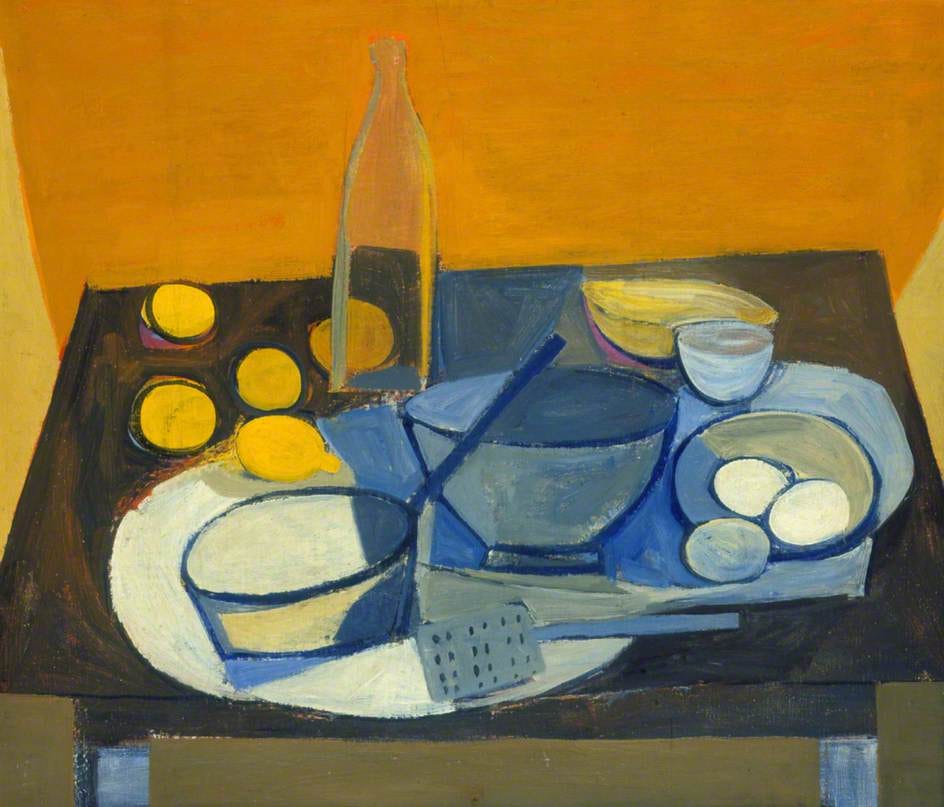
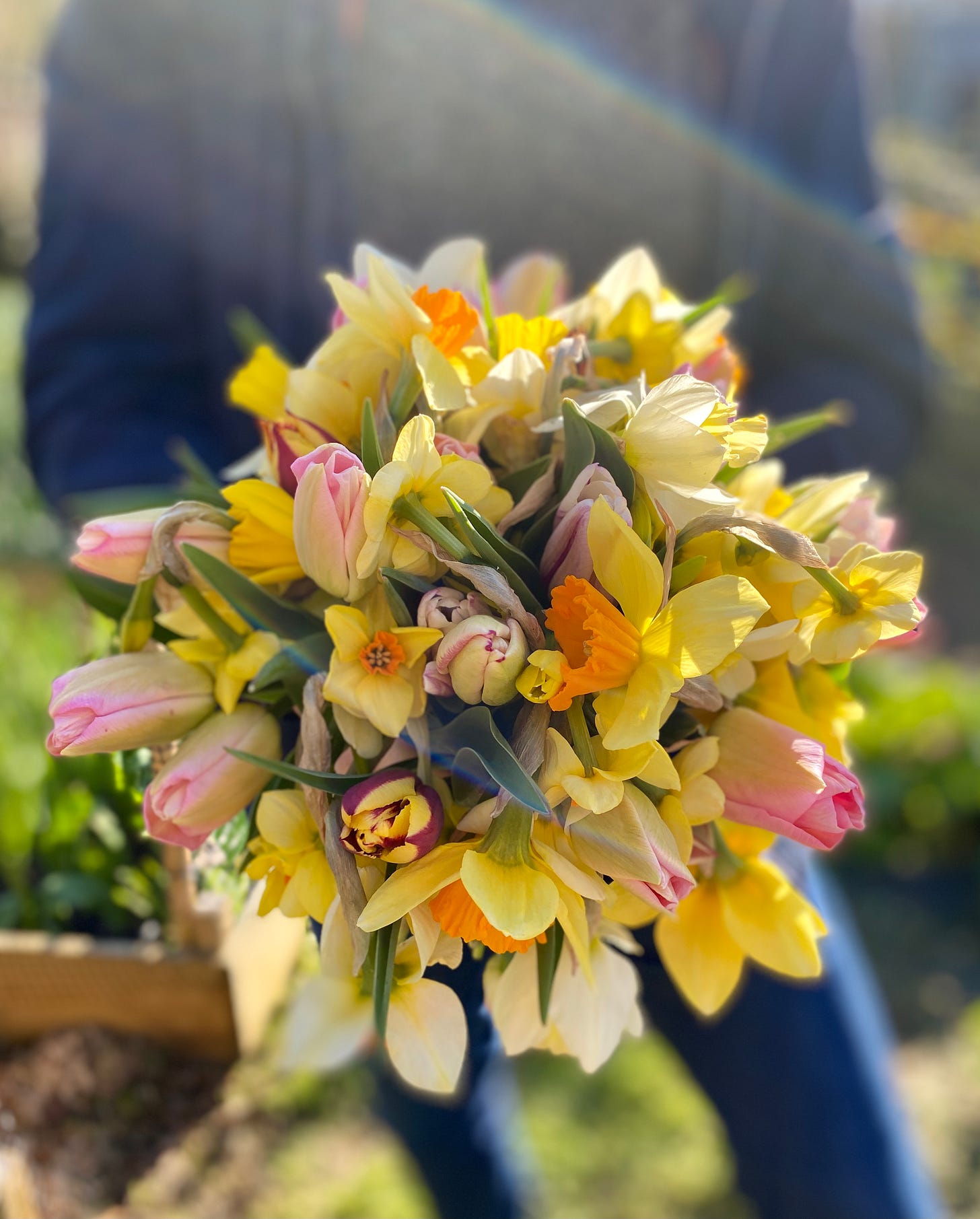
Lovely post, thx Jane. And yes to the big Mason Cash bowl. I’ve had mine for decades, and it’s perfect for my regular bake of 4 loaves of bread. If (when??) it gets broken I would absolutely have to replace it, nothing else available is the right size.
I love your selection of art work too. Good to see the domestic arts captured in conventional art forms 👌🏽💚🙏🏼
I've been hankering after one of these for some time! Like others have said, I look forward to these posts so much Jane. Thank you.